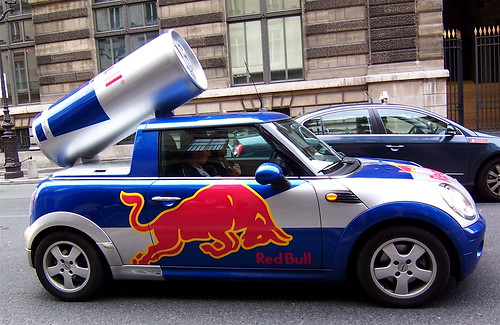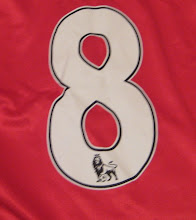 Hi, how's everyone doing? I hope everyone is doing great!
Hi, how's everyone doing? I hope everyone is doing great!This week's topic is about identifying and discuss an addition ROI case example.
I'm pretty sure everyone knows what Red Bull is. For those who don't know what Red Bull is, Red Bull is an energy drink sold by an Australian company. It's basically an energy drink like Mother and V Energy.
 I'm not sure about you readers out there but I've encountered many times that Red Bull's car is often around busy areas in the City and even in Universities to give out free Red Bull energy drink. The main goal of this activity is to gain awareness from the public. In my opinion, this is a way of advertising, those drinks are absolutely free of charge to anyone that wants one if they ever across one of those cars. It's a simple investment of advertising and Red Bull might not necessary get return from their investment but they would increase their branding and increase the demand of Red Bull energy drink to supermarkets, grocery store, or convenient store. In that way, they are indirectly gaining profit or return from the investment of giving out free energy drinks.
I'm not sure about you readers out there but I've encountered many times that Red Bull's car is often around busy areas in the City and even in Universities to give out free Red Bull energy drink. The main goal of this activity is to gain awareness from the public. In my opinion, this is a way of advertising, those drinks are absolutely free of charge to anyone that wants one if they ever across one of those cars. It's a simple investment of advertising and Red Bull might not necessary get return from their investment but they would increase their branding and increase the demand of Red Bull energy drink to supermarkets, grocery store, or convenient store. In that way, they are indirectly gaining profit or return from the investment of giving out free energy drinks.In my opinion, ROI is calculated by (profit from investment - cost of investment) / cost of investment. In other words, when an amount of money is being invested, the profit from the investment has to be accumulative than what has invested.
In October 2012, Felix Baumgartner backed by Red Bull had created a new World Record by jumping off 120,000 feet from space with a record speed over 800 MPH. It was a historical moment for the whole world. In my opinion, it's a huge investment that Red Bull made and there are high risk as they wouldn't know what would the public response were. This balloon itself had cost Red Bull $100,000 USD.
On that particular day, the even was broadcast live over 40 networks in 50 different countries all across the world. According to Telegraph, "more than 3 million tweets were sent about the jump including those from people encouraged by Red Bull to send their questions for Baumgatner's post-jump conference."
On Red Bull's Twitter, @Redbull, gained heaps of followers over the 6 months especially the 30 days after the event. Red Bull actually reached over 3 million impressions with over 1,400 tweets.
Similar situation on Facebook, Red Bull gain heaps of fans but after a while, this topic begun to reduce tremendously.
 |
As days goes by, the graph begun to change drastically.
In conclusion there are pros and cons towards this huge investment. It's worth it to get more attention from the world but it's only short term plan. From all the graph and research, I can conclude that this event is only a short term event to get more attention from the world and eventually the whole world will stop talking about it or even remembering it.
That's all for this week guys.
Catch you guys later. See ya.
Have a great week ahead!




3 comments:
Hey there! Interesting look into what Red bull is doing to get gain their awareness amongst people, the collaboration with Felix for this stunt shows the extent to which companies are willing to go. Do you think it was a successful campaign?
sammacgregor.wordpress.com
Great post and great example Max!
You don't always realise how successful a particular stunt has been till you take a good look at the numbers sometimes...
Judging by TweetReach the impact of this stunt has been phenomenal and leave no doubt to me that this has been another successful campaign in a long line of successes from RedBull GmbH.
What's next I wonder?
This is a great post Max! ☺ It is an impressive gain once you look closely at the figures. Just wondering, how much would you think this social media and free-giveaway campaign would have helped increased their sales? Cheers! :D
Post a Comment